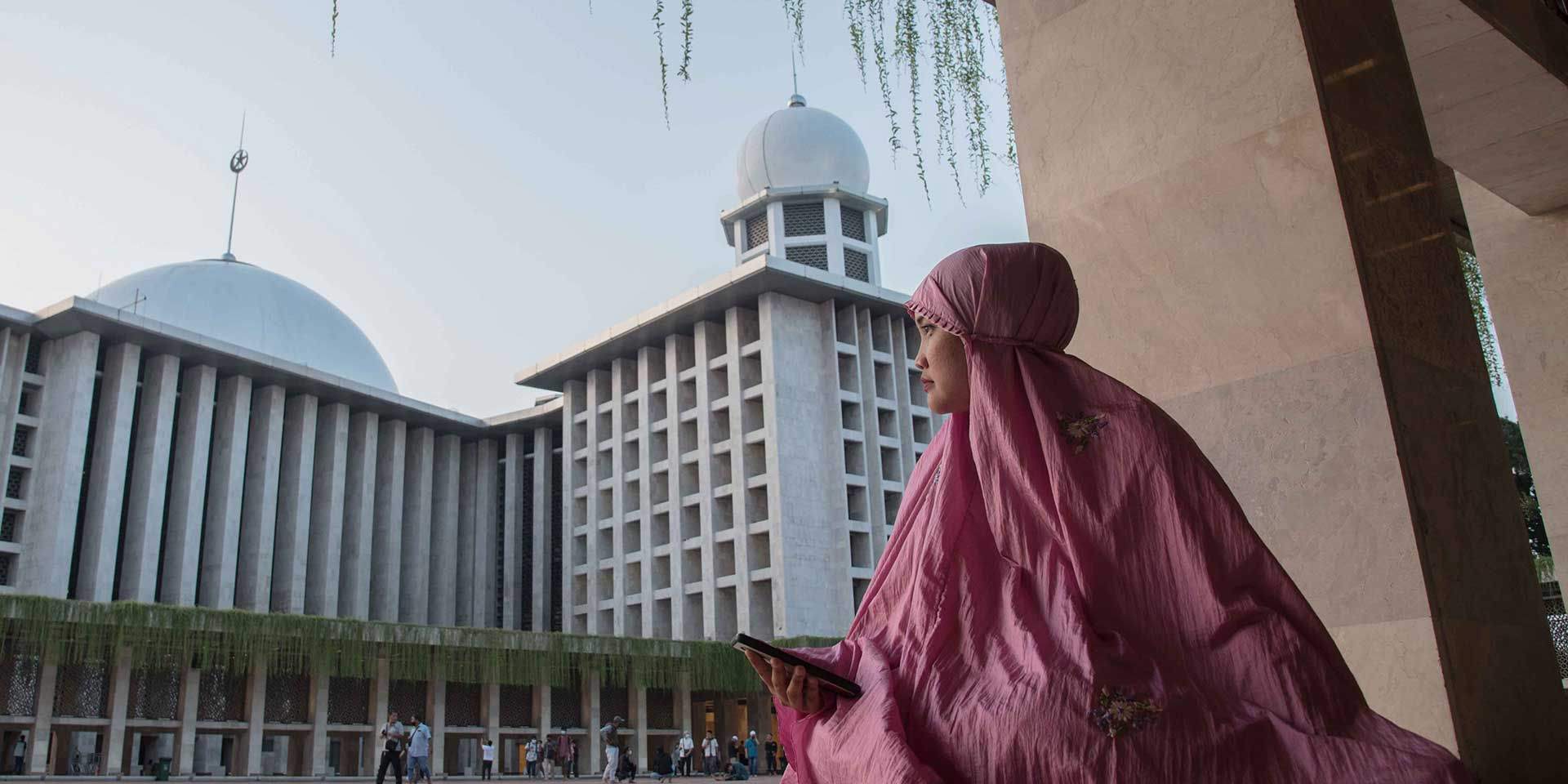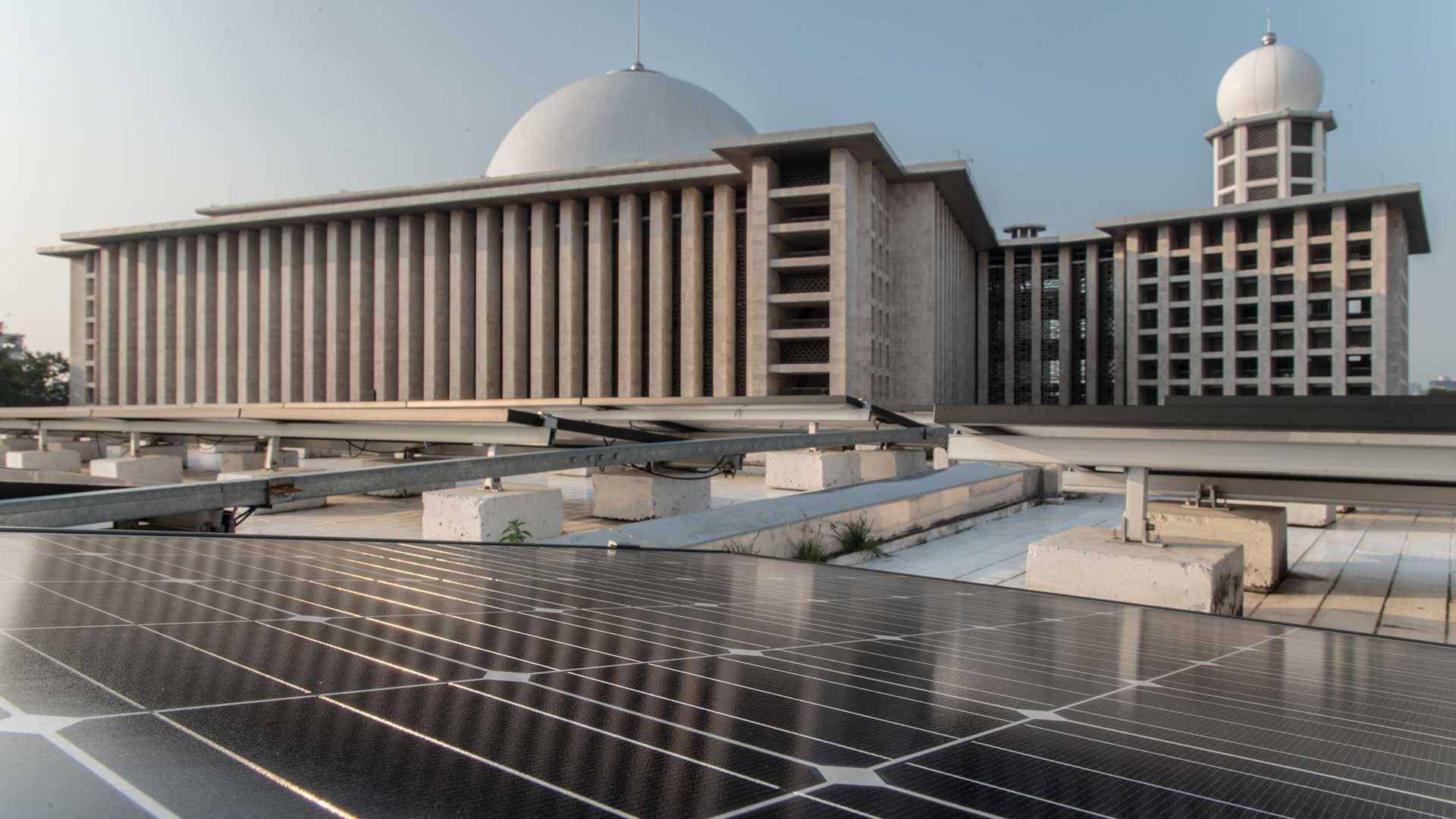Indonesia's capital, Jakarta, is getting hotter, and the city is sinking. The groundwater which has been extracted over many years of rampant development allied with rising sea levels have resulted in regular and persistent threats of flooding.
Rapid urbanization, a global trend which has already led to more than half the world’s population residing in cities, has also left little space for newcomers. Yet still they come. Jakarta's population is projected to swell to more than 35 million by 2030.
Against this backdrop and amid daily pollution levels which regularly exceed dangerous levels, there is a growing push in Indonesia to make buildings greener, a movement that now includes Indonesia's national mosque. In April, the Istiqlal Mosque, the largest mosque in Southeast Asia, was announced as the first place of worship in the world to be awarded final certification under the IFC-developed EDGE green building program.
With nearly 40 percent of global greenhouse gas emissions generated by buildings and construction, tackling resource efficiency in the built environment is a vital tool in the battle to counter the climate crisis, said Corinne Figueredo, EDGE Green Buildings lead at IFC. “We are seeing terrific momentum in asset owners investing in building green, as EDGE has now certified more than $37 billion in green floor space in just a few years.”
The greening of Indonesia’s national mosque is part of a wider effort globally, whether through the adoption of new design principles in construction or by retrofitting existing structures. As investors adopt carbon reduction targets, energy efficiency is being embraced, with solutions like rooftop solar farms that can help power a building's operations and rainwater harvesting systems which reduce overall water consumption.
The COVID-19 pandemic has only spurred that demand. Features like LED lights, solar shades, recycled cabinets and flooring, low-flow plumbing fixtures, solar thermal heat tubes and green roofs are becoming more common.
Figueredo said momentum is building globally as countries seek to build green in order to meet the demands of the Paris Agreement. “In Colombia, for example, we have been able to drive market penetration of green buildings from zero to more than 20 percent since 2017, and have had a direct influence in helping the country meet their climate goals.”
The challenge is particularly acute in developing nations such as Indonesia.
Like many emerging markets, Indonesia faces a stark balancing act when it comes to improving prosperity for its almost 280 million people against the impact of climate change. Indonesia is the world's biggest thermal coal exporter. It is also the largest palm oil producer, which has contributed to massive land clearing with fires that have in the past caused plumes of smoke to blot out the sky in neighboring Singapore and Malaysia.
Indonesia is also home to the largest Muslim population in the world and more than 800,000 mosques. Government officials have been working on a plan to make thousands of mosques more eco-friendly, along with other places of worship.
“Redeveloping the Istiqlal Mosque to make it a center of enlightenment for environmental protection has been one of our priorities,” said Prof. Nasaruddin Umar, High Priest of the Istiqlal Mosque. “This remarkable achievement is clear evidence of our commitment to promoting conservation efforts both at the Istiqlal Mosque and across the country."
Prof. Nasaruddin said protecting the environment was in line with the principles of Islam. It’s not just Indonesia where Islam has a green future. In 2019, Europe’s first green mosque opened its doors in Cambridge, in the United Kingdom, while Dubai, Malaysia, the U.S., Morocco and other countries have seen similar developments.
While the challenges presented by the climate crisis are immense, there are also practical solutions that are within reach of just about everyone, said Azam Khan, IFC Country Manager for Indonesia and Timor-Leste. More than 1.6 million square meters of building space in Indonesia has now been certified under EDGE, cutting potential carbon emissions by about 48,000 tons per year, equivalent to planting around 800,000 trees.
"Climate-related disasters are becoming more frequent, including in Indonesia," Khan said.
"But there are also opportunities to take direct action, and the redevelopment of the Istiqlal Mosque shows that investing in climate resilient infrastructure, including green buildings, can make a measurable difference," he said.
Published in July 2022

